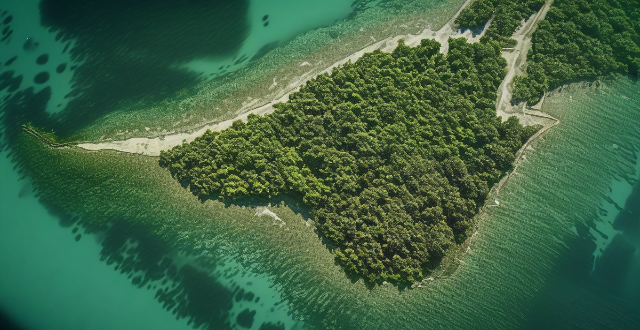Climate change is causing significant changes in ecosystems around the world, leading to the loss of habitat for endangered species. Rising temperatures, changing precipitation patterns, sea level rise, and extreme weather events are all factors that contribute to this loss. Endangered species are particularly vulnerable to these changes due to their small populations and limited ranges. Examples of endangered species affected by climate change include polar bears, giant pandas, leatherback turtles, and amphibians. It is essential that we take action to protect these species and their habitats, including reducing greenhouse gas emissions, conserving natural habitats, and developing adaptation strategies.

Relationship between Climate Change and Loss of Habitat for Endangered Species
Climate change and the loss of habitat for endangered species are closely intertwined. As the Earth's climate continues to warm, it is causing significant changes in ecosystems around the world. These changes can have a direct impact on the habitats of endangered species, leading to their decline or even extinction. In this article, we will explore the relationship between climate change and loss of habitat for endangered species.
How Climate Change Affects Habitats
Climate change affects habitats in several ways, including:
- Rising temperatures: As temperatures rise, some areas may become too hot for certain species to survive. This can lead to the shrinking or disappearance of their habitats.
- Changing precipitation patterns: Changes in rainfall patterns can alter the availability of water in an ecosystem, affecting the growth of plants and the survival of animals that depend on them.
- Sea level rise: Rising sea levels can flood coastal habitats, making them unsuitable for many species.
- Extreme weather events: More frequent and severe storms, droughts, and wildfires can destroy habitats and make it difficult for species to recover.
Impact on Endangered Species
The loss of habitat due to climate change has a particularly devastating impact on endangered species. These species often have small populations and limited ranges, making them more vulnerable to environmental changes. Some of the ways that climate change affects endangered species include:
- Reduced food sources: Changes in temperature and precipitation can affect the availability of food for endangered species, leading to malnutrition or starvation.
- Altered migration patterns: Many endangered species rely on specific migration routes to reach breeding grounds or wintering areas. Climate change can disrupt these patterns, making it difficult for individuals to find suitable habitats.
- Increased competition: As habitats shrink or change, endangered species may come into contact with other species that compete for resources, further reducing their chances of survival.
- Loss of genetic diversity: Smaller populations of endangered species may suffer from reduced genetic diversity, making them less adaptable to changing conditions.
Examples of Endangered Species Affected by Climate Change
Some examples of endangered species that are affected by climate change include:
- Polar bears: Rising temperatures cause sea ice to melt earlier in the year, reducing the amount of time polar bears have to hunt for seals.
- Giant pandas: Changes in bamboo forests due to rising temperatures can reduce the availability of food for giant pandas.
- Leatherback turtles: Rising sand temperatures can affect the sex of leatherback turtle hatchlings, leading to imbalances in population sex ratios.
- Amphibians: Many amphibian species are sensitive to changes in temperature and moisture levels, which can affect their ability to reproduce and survive.
Conclusion
In conclusion, climate change and the loss of habitat for endangered species are closely linked. As the Earth's climate continues to warm, it is essential that we take action to protect these vulnerable species and their habitats. This includes reducing greenhouse gas emissions, conserving natural habitats, and developing strategies to help species adapt to changing conditions. By working together, we can help ensure a future where endangered species thrive alongside humans in a healthy and sustainable world.